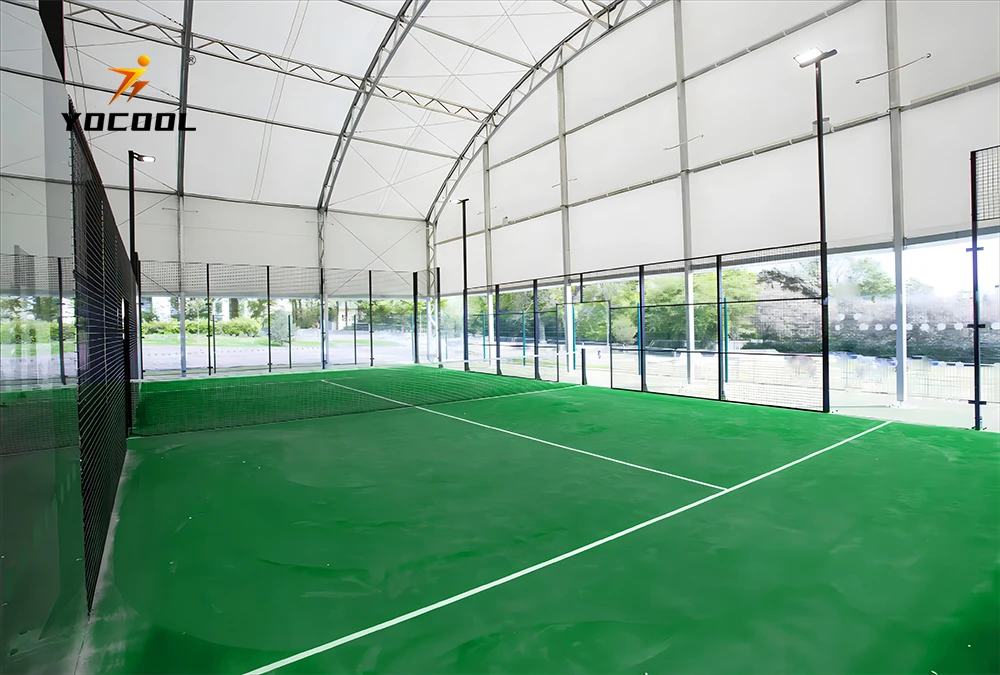

How to Build a Padel Court A Comprehensive Guide
Padel is one of the fastest-growing sports in the world, combining elements of tennis and squash within a smaller, enclosed court. Originating in Mexico, it has spread rapidly across Europe and beyond, becoming a favorite pastime for many. If you’re considering building a padel court, this guide will provide you with essential insights on how to do so effectively.
1. Choosing the Location
The first step in building a padel court is selecting the right location. Ideally, the site should be level, with adequate drainage to prevent water accumulation. The dimensions of a standard padel court are 20 meters long and 10 meters wide. Ensure the space allows for this footprint, while also considering room for spectators and additional amenities, such as seating areas or refreshment stands.
2. Understanding Regulations
Before proceeding, familiarize yourself with local zoning laws and regulations. Some areas may have restrictions on sports facility construction, including noise levels and operational hours. Securing the necessary permits beforehand can save you from potential hassles later on.
3. Designing Your Court
A padel court consists of walls, a playing surface, and netting. Traditional courts are enclosed by glass walls on both sides and fencing at the back. The walls provide strategic opportunities during gameplay, as players can use them to bounce the ball back into play. When designing the court, make sure to use high-quality materials that can withstand wear and tear.
The surface of the court is equally important. Common materials include artificial grass, concrete, or asphalt, each offering different levels of grip and playing experience. If you choose artificial grass, ensure it is specifically designed for padel, as it provides better durability and gameplay.

4. Installation Process
Once you’ve finalized your design, it’s time to begin installation. Depending on your expertise and the complexity of the court, you may want to hire professionals who specialize in sport facility construction. The process generally involves excavating the area, laying a proper foundation, installing the surface material, and erecting the walls and netting.
After the court is built, attention turns to the finishing touches, such as proper lighting and signage. Good lighting is crucial for evening matches, both for player visibility and spectator enjoyment.
5. Maintenance
Like any sports facility, a padel court requires regular maintenance. This includes cleaning the surface, checking for damage to walls or fencing, and ensuring that drainage systems are functioning correctly. Regular maintenance not only prolongs the life of the court but also enhances the overall playing experience.
6. Creating a Community
Once your padel court is complete, consider organizing events or tournaments to foster a sense of community around the sport. Creating a welcoming environment can attract players of all skill levels, making your court a local hub for fitness and socializing.
Building a padel court is a rewarding endeavor that can bring joy to many. With the right planning, materials, and maintenance, you’ll create a beautiful facility for players to enjoy for years to come. Whether for personal use or as a commercial venture, investing in a padel court can lead to a thriving sports environment that encourages physical activity and community engagement. By following these guidelines, you'll be well on your way to constructing a successful padel court that meets the needs of players and enthusiasts alike.
Premium Paddle Racquet | Enhance Your Padel Court Performance
Premium Padel Courts: Design Your Perfect Padel Tennis & Panoramic Court
Premium Padel Court & Panoramic Padel Tennis Courts
Elite Paddle Racquets: Power, Control & Comfort for Padel Tennis
Premium Paddle Racquets: Elevate Your Padel & Tennis Game
Pro Carbon Paddle Racquet: Power & Precision Control